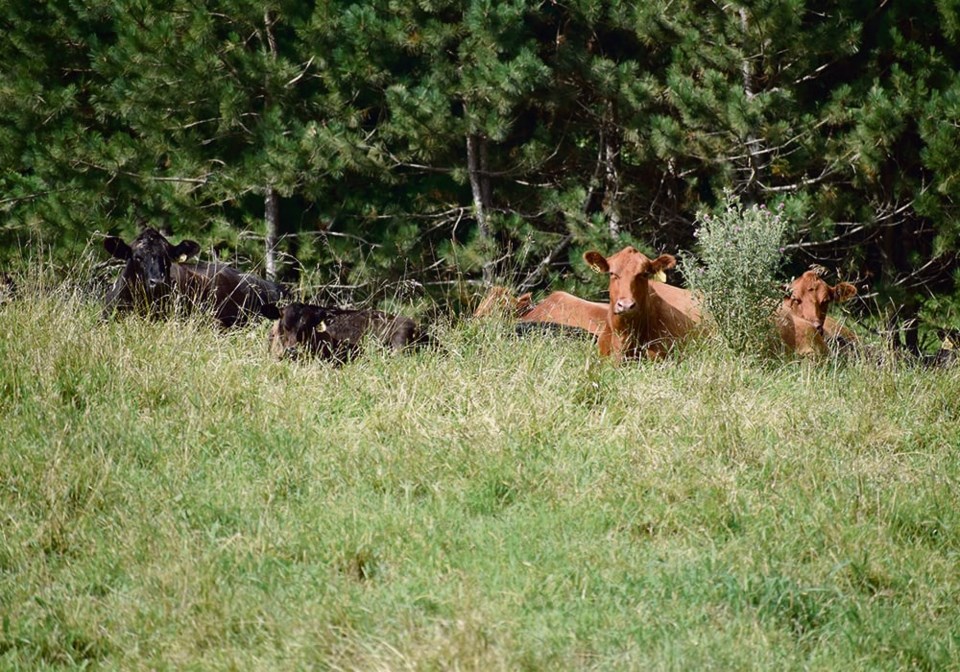WESTERN PRODUCER — Last year, two globally respected organizations said the world needs more pork, chicken and beef.
In September, the U.S. Department of Agriculture predicted that per capita consumption of calories from animal products would increase 29 percent from 2011 to 2050.
Then, in its annual outlook, the Organization for Economic Cooperation and Development said worldwide consumption of poultry, pork, beef and lamb would increase by 15, 11, 10 and 15 percent, respectively, over the next decade.
Seeing how demand is going up, there is a major opportunity for Canada’s livestock industry to expand and produce the beef and pork that the world desires.
That expansion is not happening.
“We have certain commodities, including yours (beef), where the trends in global demand and our capacity to supply them are out of sync,” said Al Mussell, an agricultural economist who spoke at the Manitoba Beef Producers annual meeting earlier this month in Brandon.
“You can see some of the forecasts … looking at very significant increases in the demand for animal proteins…. Meanwhile, our cow herd, our pig herd, how are we expanding to meet this demand?”
Instead of expanding, Canada’s cattle and pig herds are shrinking or stagnant, said Mussell, director of research with the Canadian Agri-Food Policy Institute (CAPI):
- From 2009-23, Canada’s beef cow herd declined from 4.5 million to around 3.56 million.
- The sow herd has been stuck at about 1.2 million for the last decade.
That lack of growth and the broader challenges in Canada’s livestock industry were laid out in a CAPI report published last fall — Forces Impacting Animal Agriculture in Canada: A Synthesis.
Canada has massive natural advantages to raise livestock, including 154 million acres of agricultural land, relatively cheap feedgrain, fresh water and a “spatial dispersion of animals” that lessens the risk of disease, the report says.
Despite those advantages, the country’s livestock sector is stuck in neutral.
One reason is public policy.
Provincial and federal governments have adopted policies such as renewable fuel mandates, which encourage crop production over livestock.
Data shows that the amount of pasture and hayland in Canada is shrinking because producing grain on that land is more profitable.
“In the West, day in and day out you’ve got competition in land use … between whether it is natural or managed pasture, relative to going into cropland,” Mussell said.
That doesn’t mean renewable fuel mandates should be eliminated, but it should be recognized that they tilt the playing field in favour of crops.
“Are we acknowledging the full reach of those policies?” Mussell said following his presentation in Brandon.
“Can we add to the fuel supply, can we reduce emissions (with renewable fuels).… These are all good intentions. But I don’t think at any point there was someone on the sidelines saying, ‘wait a minute, what about biodiversity? What about land that will be pulled out of grasslands?’ ”
Another example is the aggressive federal policy on methane emissions from cattle.
The feds have set a target of cutting overall methane emissions 40 to 45 percent below 2005 levels by 2030. Since cattle are a major source of methane, beef producers are in the crosshairs.
“There’s going to be increasing pressure on the industry to meet those goals or to respond to those goals,” said Karen Beauchemin, a retired research scientist from Agriculture Canada’s research centre in Lethbridge.
The problem with such an ambitious goal around greenhouse gas emissions is it has unintended consequences, says the CAPI report.
“Animal agriculture accounts for five percent of all emissions in Canada…. Thus, only a small portion of emission targets could be met by reducing or even eliminating livestock production in Canada,” the report says.
Plus, the emissions from Canada’s beef and pork industries are low relative to other parts of the world.
As a result, Canada’s national policy on methane and livestock emissions doesn’t provide a global benefit. If Canada produces less beef and reduces emissions, someone else will produce that beef.
“You impair our animal production system … what are other countries supposed to do?” Mussell asked.
“The Canadians. They’re taking this on, so I guess I better produce more to make up for what I lost from the Canadians. When you do that, because we have very low emission intensity in our animal agriculture, the global greenhouse emissions will increase. Absolutely they will.”
The shrinking and stagnation of Canada’s livestock sector is more complex than government policy around emissions and renewable fuels.
During his talk in Brandon, Mussell pointed to drought, climate change, labour shortages and barriers to free trade that are hindering livestock production.
But it’s clear that some policy changes are needed so that Canadian ranchers and producers can benefit from increasing global demand for beef, pork and animal proteins.
“There is a small number of countries with the capacity to supply others efficiently and sustainably,” said a slide from Mussell’s presentation in Brandon.
“Canada is among them.”




